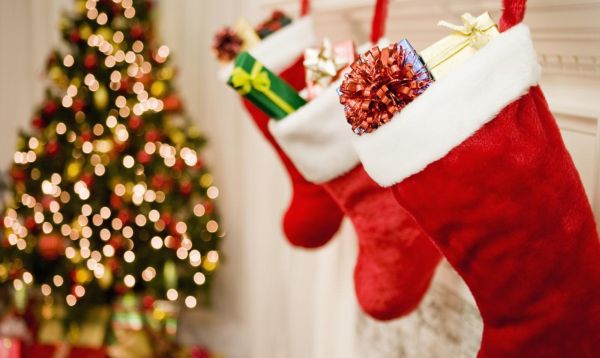There are numerous traditions associated with North America's favorite holiday. But have you ever wondered why we do them? From hanging stockings to kissing under the mistletoe, here's an explanation of how twelve Christmas traditions got started.
1. Eggnog - It is believed that drinking eggnog during the Christmas season dates back to the early 1600s, because it always was considered a winter beverage. Eggnog started as a British drink called posset that included eggs, milk and ale. Today, the drink is popular with or without alcohol.
 |
Here's a little-known part of the mistletoe tradition: when a man kisses a woman under the plant, he must pluck a berry from the plant. When there are no berries remaining, you no longer can kiss beneath that mistletoe.
3. 12 Days of Christmas - There is a misconception that the 12 Days of Christmas refers to the 12 days leading up to the holiday. Actually, Christmas marks the start of the 12 days. In some cultures, the 12 days start on Dec. 25, while it starts on Dec. 26 in others. Either way, the 12 days culminate with the Epiphany. "Epiphany" means to show, make known, or reveal, and the Epiphany is when the Wise Men brought gifts to the Christ child, thus revealing him as Lord.
4. Exchanging Gifts - Some believe the tradition started with the Wise Men giving myrrh, frankincense and gold to Jesus, while others attribute it to Santa Claus, himself, St. Nicholas. There also is the thought that Jesus provided the greatest gift for mankind, so gifts are exchanged to remind us the greatest and first Christmas gift.
5. Christmas Trees - Druids placed evergreen branches over their doors, in the belief it would ward away evil spirits. Late in the Middle Ages, Germans and Scandinavians placed evergreen trees inside or just outside their home to express hope for spring.
 |
7. Hanging Stockings - This started as a tribute to St. Nicholas. Legend has it that he once tossed three coins down a chimney of the home of three sisters, to help out the poor family. Each coin landed in a separate stocking that had been hung at the fireplace to dry.
8. Poinsettias - The plant is named after Joel Robert Poinsett, an American ambassador to Mexico, who was so pleased by the plant that, in 1829, he shipped some from Mexico to his greenhouse in South Carolina. The red part of the plant is said to symbolize the Star of Bethlehem. A Mexican legend has it that a poor boy gathered weeds on Christmas to present to the altar as a gift to Jesus. When he did so, the weeds formed red blooms.
9. Christmas Cards - J.C. Horsley started the tradition in England in 1843, with cardboard cards that depicted a party of adults and children with glasses raised in a toast, and the words "Merry Christmas and a Happy New Year to you," printed on it.
10. Fruitcake - This concoction started in the Middle Ages as a combination of dried fruits, honey and nuts. It has long been a dessert relegated for special occasions such as weddings and holidays, which eventually caused it to evolve into a Christmas tradition.
11. Decking the Halls - Since evergreens remain green throughout the year, they long were thought of as symbols of enduring and renewed life. So, they were carried inside during the winter in superstitious hope that they would ensure the return of vegetation in the spring.
12. Advent Wreath - The origin isn't clear, but pre-Christian Germanic people used candlelit wreathes in December days as a sign of hope that spring will bring warmth and extended daylight. It was adapted to Christian use by the Middle Ages. The purple candles symbolize prayer, penance, sacrifices and goods works. The rose candle is lit on Gaudete Sunday, which is the Sunday of rejoicing.
Sources: mymerrychristmas.com, snopes.com, christmaslore.com, CRI/Voice, christmassprite.com, christmas-tree.com, ezinearticles.com; classbrain.com; catholiceducation.org


